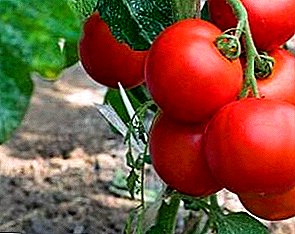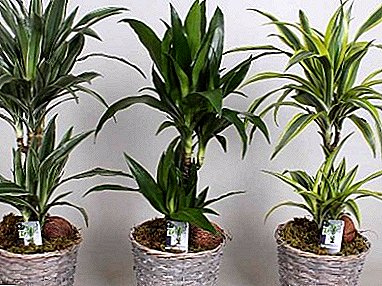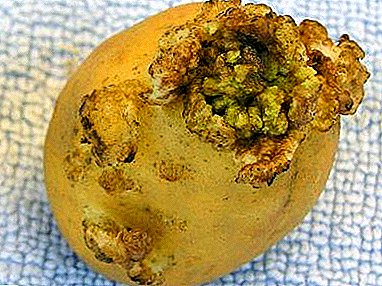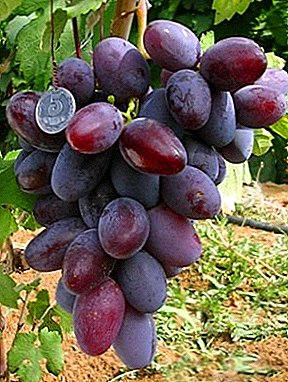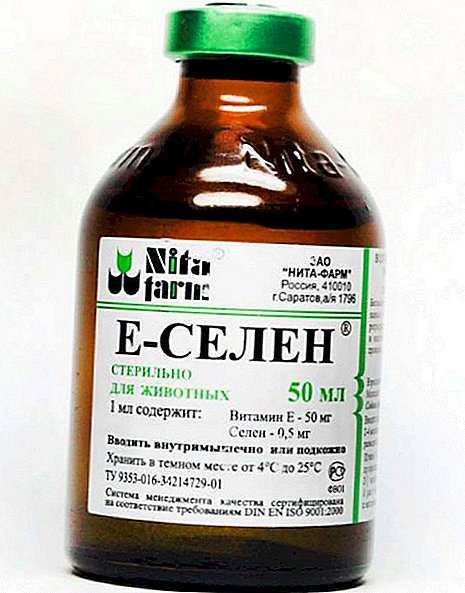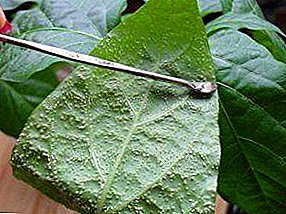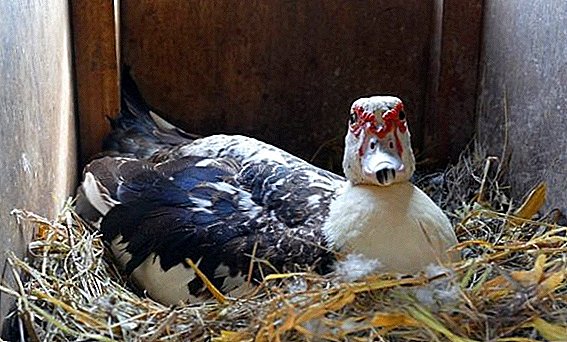 Cowskin is the most valuable raw material for the production of high quality leather. However, the final characteristics of the resulting product are entirely dependent on the correctness of the dressing procedure. Only then can you be confident in the strength and durability of the product. On the intricacies and technology of processing cattle hides in the home, read further in the article.
Cowskin is the most valuable raw material for the production of high quality leather. However, the final characteristics of the resulting product are entirely dependent on the correctness of the dressing procedure. Only then can you be confident in the strength and durability of the product. On the intricacies and technology of processing cattle hides in the home, read further in the article.
Processing technology (manufacture) of cattle hides at home
Leather production has a rich history and traditions. Even primitive people mastered the basics of selfish dressing, getting with the help of improvised means soft, smooth material for tailoring. And modern fashionistas do not think of their interior and wardrobe without leather products that never go out of fashion, are distinguished by their style and practicality.
However, a certain skill is important for obtaining a quality product. Consider the step by step processing of hides.
Did you know? The word "skin" in ancient times sounded like "goat" and meant specifically the skin of a goat. Subsequently, the value of this lexical unit expanded and began to denote the cover of the body of any animal, and man.
Training
At home, when preparing the skin for dressing, it is important immediately after it is removed from the carcass:
- remove fatty meat residues;
- Spread on a flat surface with the coat of wool down to cool;
- generously sprinkle with large salt without iodine (per cow skin will need about 3-4 kg; this is done when the raw material has cooled);
- dry the skin for several days before it becomes dry and hard.
 Salt pelt
Salt peltSoaking
To obtain soft, high-quality leather, cow skin is soaked in 2 steps:
- First, the raw material is dipped in clean water for 4 hours.
- And after that for 12 hours it is kept in a saline solution, which is prepared at the rate of 20 g of salt per 1 liter of water. Note that over time, the skin will begin to swell, so experienced experts advise to prepare 8 liters of liquid for each kilogram of it.
Read more about the best breeds of dairy and meat cows.
Soaking is considered of high quality, when after it the subcutaneous layer is easily removed from the wet-salted workpiece. If at the same time there are difficulties, the raw materials require additional exposure in saline.  To exclude bacterial infection of skins, tanners advise to use a solution based on salt and furatsilina. However, it is not worth leaving it for a long time in this form, because the material may deteriorate. Experienced tanners advise to exclude bacterial infection of the skins, in addition to salt, to add 6 tablets of furatsilina to each 10-liter bucket of water.
To exclude bacterial infection of skins, tanners advise to use a solution based on salt and furatsilina. However, it is not worth leaving it for a long time in this form, because the material may deteriorate. Experienced tanners advise to exclude bacterial infection of the skins, in addition to salt, to add 6 tablets of furatsilina to each 10-liter bucket of water.
Important! Harvested raw materials should be without cuts, since even small punctures reduce its quality.
Mechanical degreasing, skinning
At this stage of dressing, it is important to scrupulously remove the subcutaneous fat deposits of the slaughtered animal. Some craftsmen make fleshing by hand, while others prefer to use a special mechanical device, the design of which resembles a rotating disk with sharp edges.
However, without a certain experience, it is dangerous to wield such a device, since improperly cut hair follicles will affect the quality of the dressing of the skin. To obtain a good result, experts advise to evenly remove the fatty layer, starting from the tail section, with smooth movements from the axial center to the periphery. 
Washing
After degreasing, the cowhide should be washed in warm water. For this it is recommended to use a soap solution. It is prepared in a proportion of 10 g: 1 l. It is best to use soap, as an alternative, suitable soda ash.
Did you know? In the XVII-XIX centuries for the design of some books used the binding of human skin. Most often similarly decorated treatises on anatomy. Copies of criminal cases of executed criminals could have bound their skin. And sometimes such books were made from the skin of the deceased according to their will.
Pickling (or pickling)
In order for the harvested skins to change their structure, they are kept in a special acetic chloride solution. To this end, acetic acid at a concentration of 0.15% and sodium chloride liquid at a concentration of 0.04% must be dissolved in water.
Pickling involves periodic mixing of the resulting composition after dipping the raw material into it. Its holding should last for 12 hours, until the moment when the white bands are left on the bends of the material during compression.  At this stage of homemade leather, pickling can be replaced by souring. Its technology is to soak up washed raw materials in an aqueous suspension of oatmeal or barley flour. The solution is prepared from warm water, adding 60 g of salt and 100 g of flour to each liter of it.
At this stage of homemade leather, pickling can be replaced by souring. Its technology is to soak up washed raw materials in an aqueous suspension of oatmeal or barley flour. The solution is prepared from warm water, adding 60 g of salt and 100 g of flour to each liter of it.
After mixing all the ingredients in the resulting composition can be dipped skin, but do not leave it for a long period without supervision. Skilled craftsmen advise to constantly monitor the results of fermentation, since the overexposed material is unsuitable for further processing.
Did you know? The reflex resulting in goose bumps was inherited from animals.. The muscles of the hair follicles contract and lift the hairs - as a result, the animal's hair stands on end. When reacting to cold, it helps to keep body heat longer, while reacting to danger, it makes the beast more massive and frightening. In humans, in the process of evolution, the hair on the body is not enough, and this reflex has no practical meaning.
Tanning
After the manipulations done, the cowhide should be tanned. The technology of this process provides for a six-hour exposure of raw materials in a special solution of chromium oxide. In its preparation, a proportion of 1.5 g of the active substance per liter of warm liquid is observed. After placing the skin in the resulting composition, it is important to stir it periodically.  Some livestock keepers tanning procedure carried out using:
Some livestock keepers tanning procedure carried out using:
- oak bark;
- stalks of stinging nettle;
- willow branches;
- alder biomass.
All components need to be finely chopped and measured in equal parts of 250 g. After that, prepare a salt solution in a ratio of 1:60 and add the vegetable mixture to it. The liquid must be boiled and then boiled on low heat for half an hour. Then, the finished decoction is filtered, allowed to cool slightly, and a cowhide is soaked in it for 6 hours.
Learn more interesting facts about cows.
Fatty
At this stage, the technology of homemade leather of cattle involves the preparation of a special emulsion.
It is done by adding the following components to the water heated to 45-50 ° C:
- laundry soap - 200 g;
- liquid ammonia - 10 g;
- any fat - 80 g
Everything is well mixed, after which the mezdrovuy side of the skin is carefully treated with the obtained tool. This is done with a soft brush or tampon. After fattening, the skin blanks are stacked and left to stand for 24 hours.
Important! It is strictly forbidden to dry the skins near the heating devices. This process should be carried out naturally.
Drying skins
At the final stage, the oiled skins tighten on a wooden grid or flooring so that the core is located on top. You should not overdo it in this matter, because after so many treatments the skin may break, but the tension should be noticeable.  For the entire period of drying, it is recommended that the billet be taken out daily in a shady place for airing. When the skins in the center zone on the side of the core become elastic and feel dry, they can be removed. After that, it is recommended to spread the skin on a flat surface and clean the core with a metal brush.
For the entire period of drying, it is recommended that the billet be taken out daily in a shady place for airing. When the skins in the center zone on the side of the core become elastic and feel dry, they can be removed. After that, it is recommended to spread the skin on a flat surface and clean the core with a metal brush.
Did you know? A polar bear has black skin under its fur. The bristles of the fur coats themselves are transparent and hollow; therefore, in various conditions, the bear's color can vary from white to yellowish. In hot countries in captivity, a polar bear may even turn green if algae begin to grow in the bristles.Due to this material will become brighter and softer. At the same time, abrupt jerks are unacceptable. The tool should move smoothly and evenly, which will give the inner side of the skin "suede" velvety. Then, until final readiness, it is sent to dry for another 2 days.
Video: skin processing
Classification of cattle hides
Experienced livestock breeders who have mastered the technology of homemade cattle skins, distinguish several of their species. Each of them differs in the level of strength and nuances in processing. Consider more.
Important! If the technology of leather making at home involves the use of any acids, remember that normal soda will help neutralize their action. Consider that during a chemical reaction there will be abundant frothiness, therefore for work choose rooms with good ventilation.
Opoec
 This is calfskin, the characteristic feature of which is faded and felted primary wool. Raw materials for the product are animals from birth to the end of milk feeding.
This is calfskin, the characteristic feature of which is faded and felted primary wool. Raw materials for the product are animals from birth to the end of milk feeding.
Typically, the size of such a material does not exceed 800 m2. In production it is used as the basis for the manufacture of chrome leather and lycra.
Sprout
We are talking about the skins of young, switched to vegetable food. They are distinguished by a distinctly pronounced spinal strip and a dim woolen cover, which already endured a molt. It is from this type that specialists begin to determine the amount of raw materials by weighing it. Usually the weight of the shoot does not exceed 10 kg. Like the previous material, it is used for the production of lycra and chrome leather.
We recommend reading about what the average life expectancy of cows and bulls, as well as what determines the weight of cattle.
Yalovka
It is the skin of sexually mature cows and heifers.
Depending on the weight category, yalovka can be of 3 types:
- lightweight (weighs from 13 to 17 kg);
- medium (its weight is from 17 to 25 kg);
- heavy (over 25 kg).
This type of leather is ideal for the manufacture of velor, yufti, cheprak. 
Bychina
Such material is characterized by super strength and a small number of folds on the collar area. It is made from the skins of castrated gobies, the weight of which exceeds 17 kg.
Depending on the weight category, bulls can be:
- lightweight (weighs between 17-25 kg);
- heavy (its weight is over 25 kg).
We advise you to read about how to milk a cow, how many liters of milk it gives, and also find out how to wean a cow.
Bychina is preferable for manual mechanical embossing. Despite the five-millimeter thickness, it is characterized by durability and retains its visual appeal even after operation for several years. 
Bull
This is the skin of the bulls in the weight category of more than 17 kg, which were not subjected to castration. Hey is characterized not only increased strength, but also a large thickness. Bulls' skins are often used to make nappa, morocco, cheprak, Russian, blinders, and napklaka.
As you can see, making skins of pets under the power of each breeder. The key to success is strict adherence to the recommendations of professionals and strict adherence to technological requirements. Also do not interfere with accuracy and diligence. We hope our article will help you achieve the expected result.


